It is my collection of runic stones (the smaller font is copy/paste, the images link to the sources)
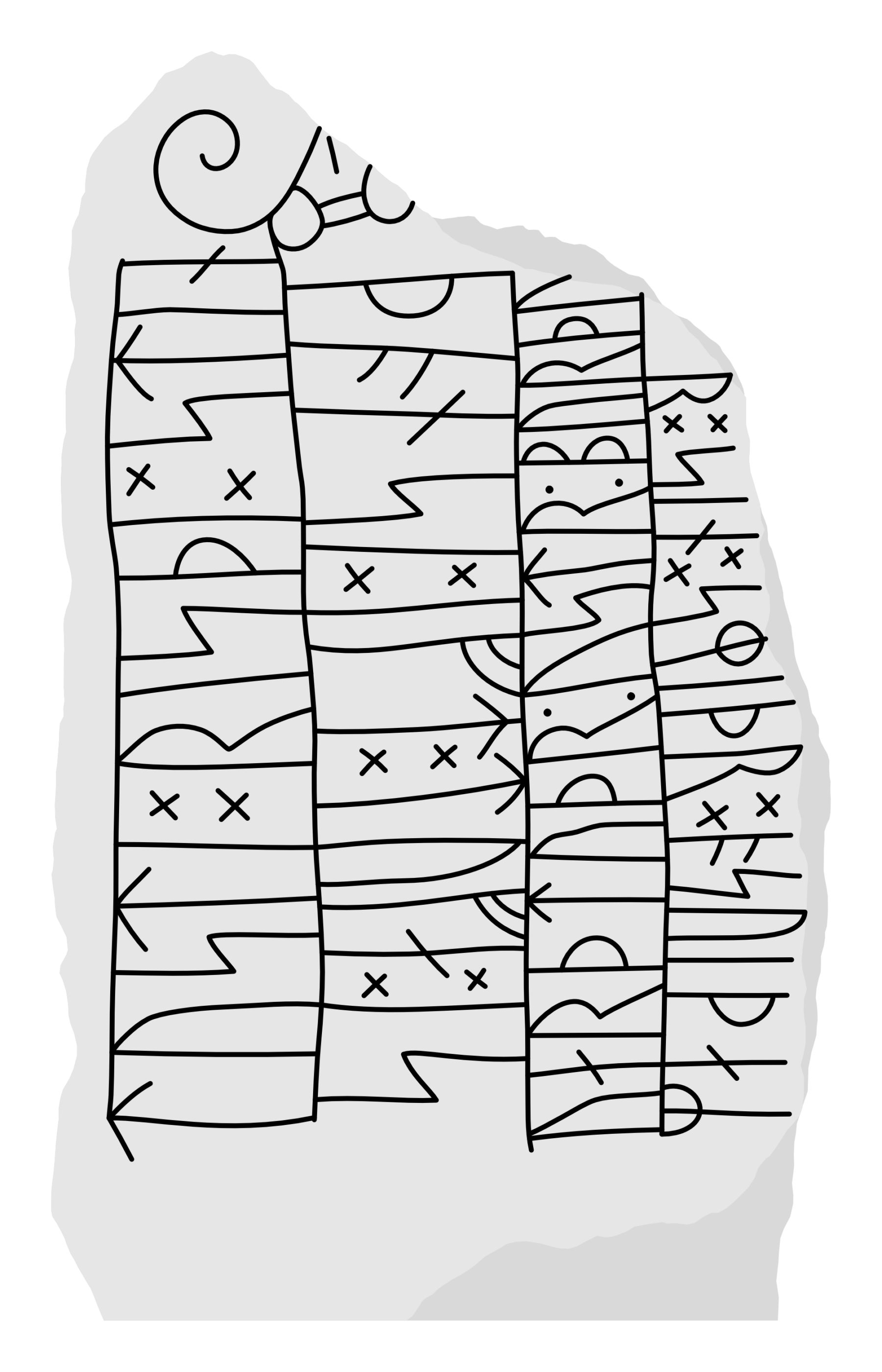
Runestone DR 108
| Ringerike style, Runestone style B-e-v, Viking
The carvings of the stone are in the runestone style B-e-v (c. 1010-1050) pertaining to the Ringerike style and contemporary with Pr 1 and Pr 2.
The inscription is not signed.
The granite stone is c. 1,98 m tall, 1,25 m wide and 0,40 cm thick.
Runic inscription
The rune text is written using boustrophedon and begins at the bottom left corner.
Runes: ᛏᚢᛋᛏᛁ ᛬ ᚱᛁᛋᚦᛁ ᛬ ᛋᛏᛁᚾ ¶ ᚦᚭᚾᛋᛁ ᛬ ᛁᚠᛏ ᛬ ᛏᚢᚠᛅ ᛬ ᛁᛋ ¶ ᚢᛅᚱᚦ (᛬) ᛏᚢᚦᚱ ᛬ ᚢᛋᛏᚱ ᛬ ᛒᚢᚱᚦᚢ¶ᚱ ᛬ ᛋᛁᚾ ᛬ ᛋᛘᛁᚦᚱ ᛬ ᚭᛋᚢᛁᚦᛅᛦ
Transliteration: tusti ¤ risþi ¤ stin ¶ þonsi ¤ ift ¤ tufa ¤ is ¶ uarþ (:) tuþr : ustr : burþu¶r ¤ sin ¤ smiþr ¤ osuiþaʀ
Old Norse: Tosti resþi sten þænsi æft Tofa, æs warþ døþr østr, broþur sin, smiþr AswiþaR.
English: Tosti, Ásviðr’s smith, raised this stone in memory of Tófi, his brother, who died in the east.
———
Kolind, Djursland, Denmark
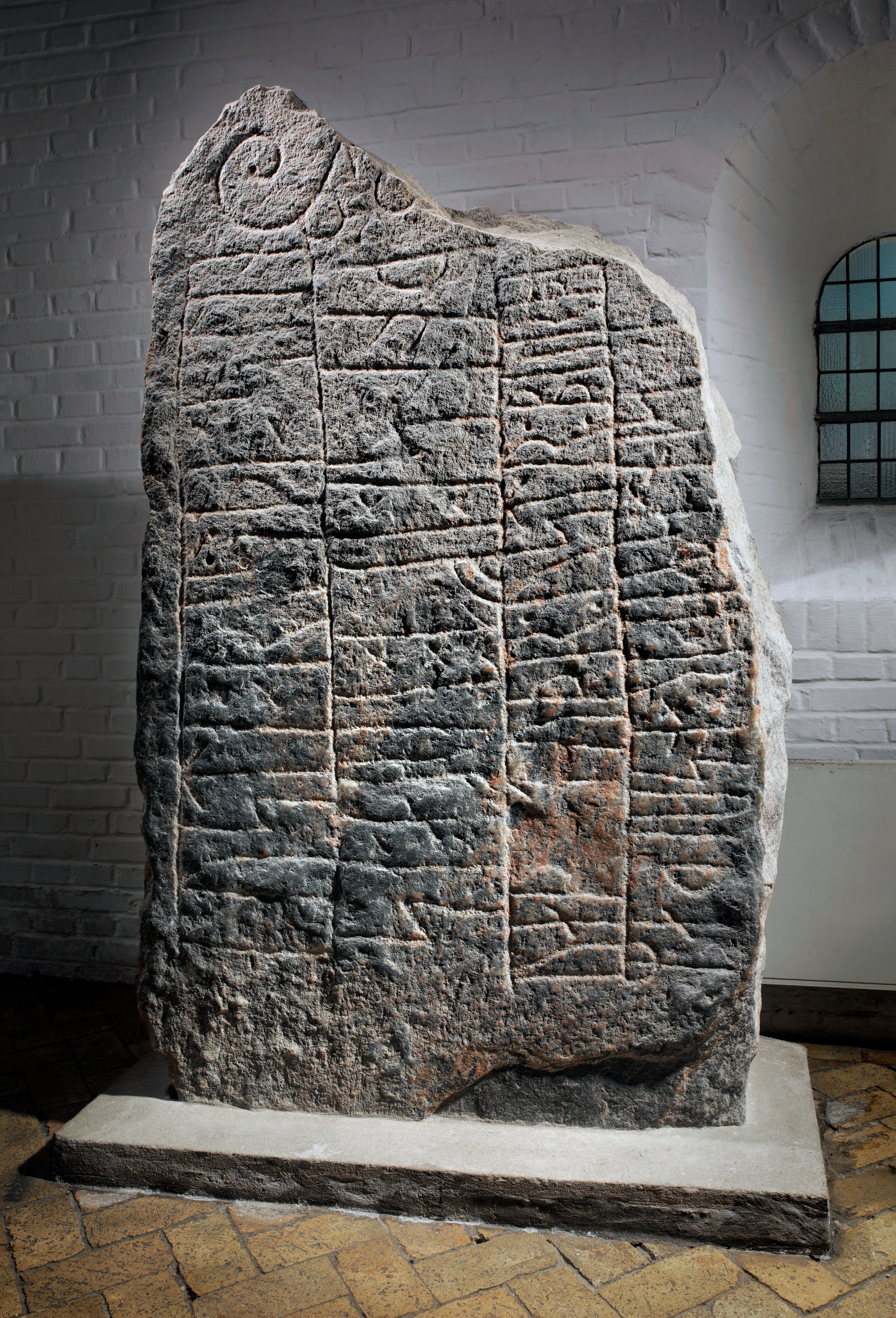
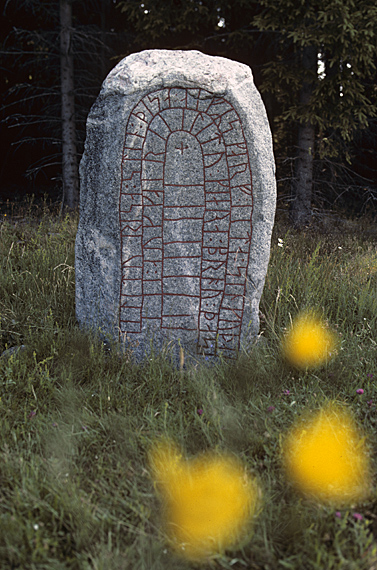
...--- ᛬ ᛅᚢᚴ ᚴᛅᛁᚱ--- ᛚᛁᛏᚢ ᛬ ᚴᛁᛅᚱᛅ ᛬ ᛒᚱᚬᚢ ᛬ ᚦᛅᛋᛁ ... ...-- ᛚᛁᛏᚢ ᚱᛁᛋᛅ ᛋᛏᛁᚾ ᛬ ᚦᛁᛋᛅ ᛬ ᛅᛁᚡᛦ ᛋ᛬ᚴᛅᚱ/ᛋ᛬ᚴᛅᚱᚡ| |ᚡ-ᛁᛏᛅ ᛬ ᛋᛁᚾ ᚴᚢᚦᛅᚾ
...--- : auk kair--- litu : kiara : brou : þasi ... ...-- litu risa stin : þisa : aifR s:kar/s:karf| |f-ita : sin kuþan
... ok "GæiR... letu giæra bro þasi ... ... letu ræisa stæin þennsa æftiR "Skær/"Skarf, f[r]ænda sinn goðan.
... and Geir- had this bridge made ... ... had this stone raised in memory of Sker/Skarfr, their good kinsman.
(apparently the text begins in the inner line)
This tradition actually explains why would they use the reverse boustrophedon. And there are plenty of runic writings going like this:
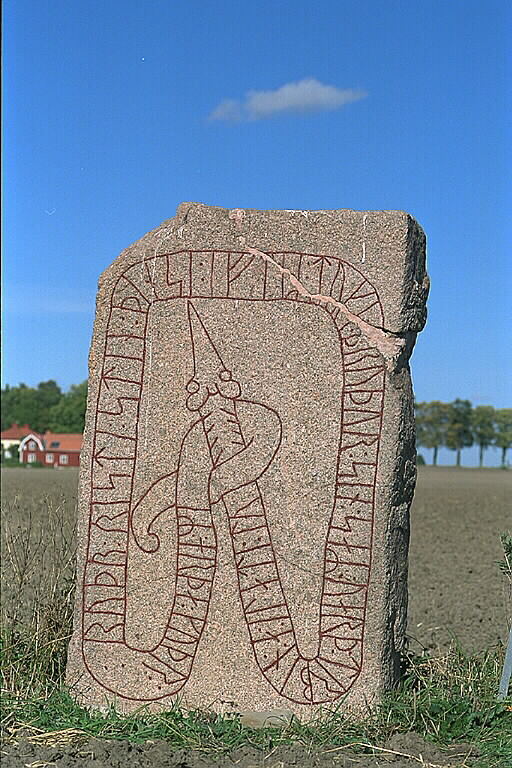
᛬ ᚱᚢᚦᚱ ᛬ ᚱᛁᛋᛏᛁ ᛬ ᛋᛏᛁᚾ ᛬ ᚦᛁᚾᛋᛁ ᛬ ᛁᚡᛏᛁᛦ ᛬ ᛏᚢᚴ- ᛬ ᛒᚱᚢᚦᚢᚱ ᛬ ᛋᛁᚾ ᛬ ᛋᛅᛦ ᛬ ᚢᛅᚱᚦ ᛬ ᛏᚱᛒᛁᚾ ᛬ ᛅ ᛬ ᛁᛚᛅᛏᛁ ᛬ ᛏᚱᛁᛦ ᛬ ᛅᚱᚦᛅ ᛬ ᚴᚢᚦᚱ ᛬
: ruþr : risti : stin : þinsi : iftiR : tuk- : bruþur : sin : saR : uarþ : trbin : a : ilati : triR : arþa : kuþr :
"Rauðr ræisti stæin þennsi æftiR "Tok[a], broður sinn, saR varð drepinn a "Ænglandi, drængR harða goðr.
Rauðr raised this stone in memory of Tóki, his brother, a very good valiant man, who was killed in England.
I wonder why did they break the text in the middle of the word ᛏᚱᛁᛦ (I suggest it's trick, not triR, but then how dare I, I don't even know norwegian not to mention old norsk)
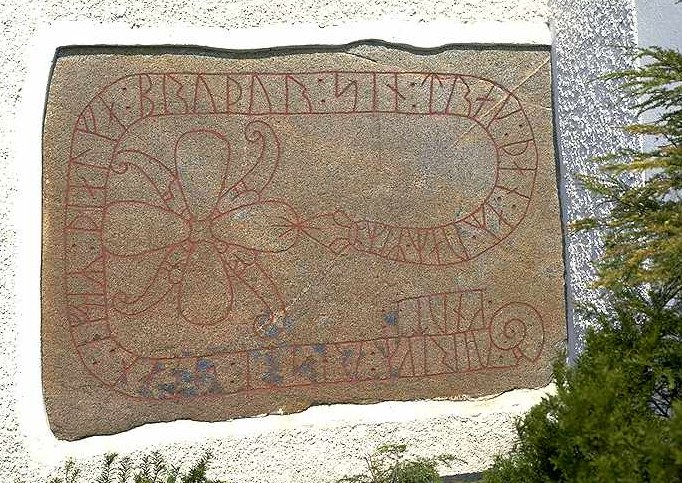
᛫ ᚢᛁᚱᛁᚴᛦ ᛬ ᚱᚽᛋᛏᛁ ᛬ ᛋᛏᛅᚾ ᛬ ᚽᚡᛏᛁᛦ ᛬ ᚦᛁᛅᛚᚡᛅ ᛬ ᛒᚱᚢᚦᚢᚱ ᛬ ᛋᛁᚾ ᛬ ᛏᚱᛅᚴ ᛬ ᚦᛅᚾ ᛬ ᛅᛦ ᛫ ᚢᛅᛦ ᛫ ᛘᛁᛦ ᛫ ᚴᚾᚢᛏᛁ ᛬
* uirikR : resti : stan : eftiR : þialfa : bruþur : sin : trak : þan : aR * uaR * miR * knuti :
"VæringR ræisti stæin æftiR "Þialfa, broður sinn, dræng þann, eR vaR með "Knuti.
Væringr raised the stone in memory of Þjalfi , his brother, the valiant man who was with Knútr.
the 1997 of the next stone probably tells that it is a recent stylization, but then what am I doing? I cannot tell true from false, I cannot even read them!











...
